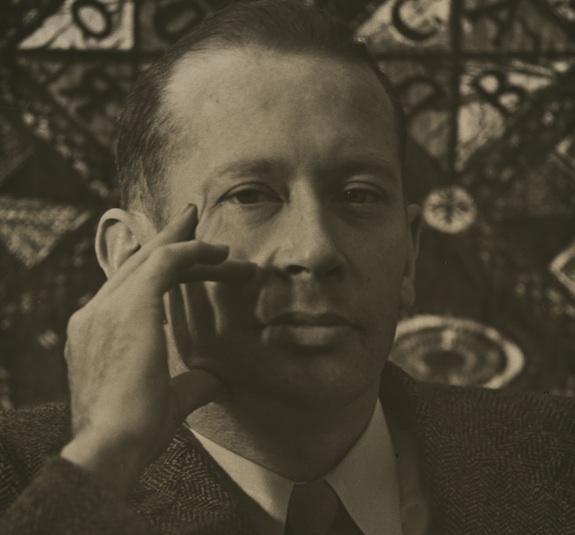Poet Portraits: “Poetic Likeness” Opens at the National Portrait Gallery
More than 75 portraits trace the history of Modern American poetry, from Walt Whitman to Allen Ginsberg
![]()

Included in the show, this portrait of E.E. Cummings by Manuel Komroff. Gelatin silver print c. 1933. Courtesy the National Portrait Gallery
“I, too, sing America,” begins the arresting poem by Harlem Renaissance poet Langston Hughes. Using the simplest of metaphors, Hughes indicts a bigoted American society. But he does not simply rid himself of it. He writes, “They’ll see how beautiful I am/ And be ashamed–/ I, too, am America.”
The words and feelings, plain as they are, gain their urgency by directly addressing contemporary life. According to historian, curator and poet David C. Ward of the National Portrait Gallery, that is what all good poetry does. “The poet had to respond to the immediacy of modern society–which I think is the core characteristic of modern poetry.”
Now these great poets of America will get the chance to once again confront the public, only this time instead of words, it will be with their lesser-known portraits. “Poetic Likeness: Modern American Poets” opened October 12th at the National Portrait Gallery and features more than 50 poets, including Langston Hughes, Anne Sexton and Allen Ginsberg.

Langston Hughes by Winold Riess, circa 1925. Pastel on illustration board. Courtesy the National Portrait Gallery
The show spans the Modern era from the late 19th century through the 1970s and provides a personal glimpse into the history of a national art form. The story begins with Walt Whitman’s iconoclastic Leaves of Grass, published in 1855. Whitman’s book of poetry was noted for its free verse and focused on the daily experiences of working class Americans. “Whitman kicks down the doors, and brings the street into the genteel world of American poetry,” says Ward.
As the years progressed, poetry became an increasingly democratized space. Some of the poets in the show even held other occupations and did not come from the esteemed halls of learned language. Wallace Stevens, for instance, was vice president of an insurance company. William Carlos Williams–now remembered for his sparse poem about eating the plums in the ice box, This Is Just To Say–was a physician.

Walt Whitman. G. Frank E. Pearsall, 1872. Albumen silver print. Courtesy the National Portrait Gallery
A handful of the poets on display, including Walt Whitman, receive special attention as makers of America’s modern voice. Ezra Pound is likewise spotlighted with a photograph taken by Richard Avedon, as well as with a sculpture in bronze, a sketch and a print. A vivid pastel of Langston Hughes compliments the sepia-toned gelatin silver print also on display.
The works themselves are often produced by well-known artists, as is the case with the Richard Avedon photograph. “There’s an artistic combination,” says Ward. “These people all tended to know each other.” Ward liked the way visual artists tried to capture their verbal counterparts.
With more than 75 portraits and evocative quoted material from the poets’ work, the show casts a contemplative mood, showing both the range and lineage of the modern American voice.
“Poetic Likeness: Modern American Poets” runs October 12, 2012 through April 28, 2013 at the National Portrait Gallery.
/https://tf-cmsv2-smithsonianmag-media.s3.amazonaws.com/accounts/headshot/Leah-Binkovitz-240.jpg)
/https://tf-cmsv2-smithsonianmag-media.s3.amazonaws.com/accounts/headshot/Leah-Binkovitz-240.jpg)